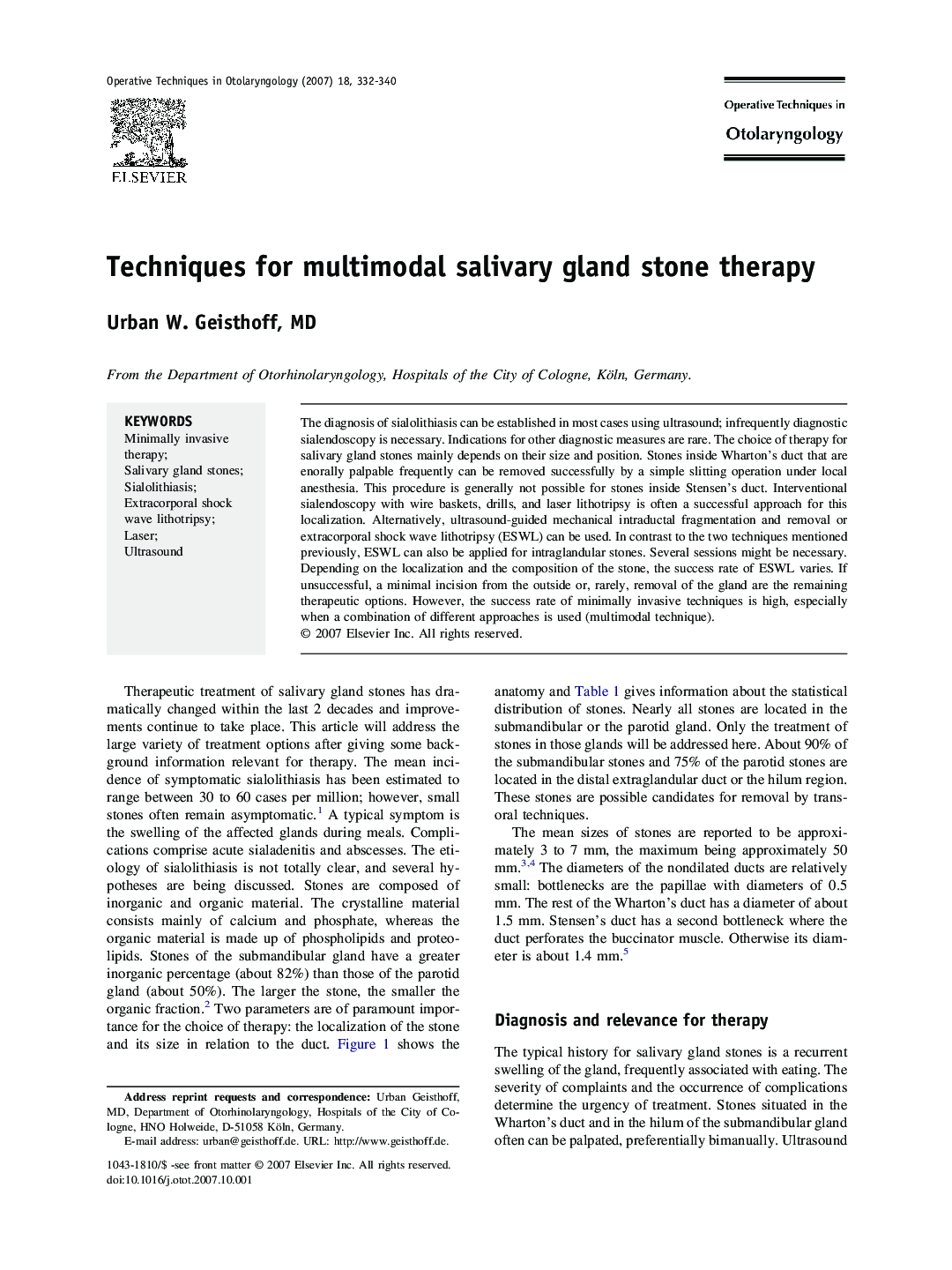| Article ID | Journal | Published Year | Pages | File Type |
|---|---|---|---|---|
| 4123194 | Operative Techniques in Otolaryngology-Head and Neck Surgery | 2007 | 9 Pages |
The diagnosis of sialolithiasis can be established in most cases using ultrasound; infrequently diagnostic sialendoscopy is necessary. Indications for other diagnostic measures are rare. The choice of therapy for salivary gland stones mainly depends on their size and position. Stones inside Wharton’s duct that are enorally palpable frequently can be removed successfully by a simple slitting operation under local anesthesia. This procedure is generally not possible for stones inside Stensen’s duct. Interventional sialendoscopy with wire baskets, drills, and laser lithotripsy is often a successful approach for this localization. Alternatively, ultrasound-guided mechanical intraductal fragmentation and removal or extracorporal shock wave lithotripsy (ESWL) can be used. In contrast to the two techniques mentioned previously, ESWL can also be applied for intraglandular stones. Several sessions might be necessary. Depending on the localization and the composition of the stone, the success rate of ESWL varies. If unsuccessful, a minimal incision from the outside or, rarely, removal of the gland are the remaining therapeutic options. However, the success rate of minimally invasive techniques is high, especially when a combination of different approaches is used (multimodal technique).
